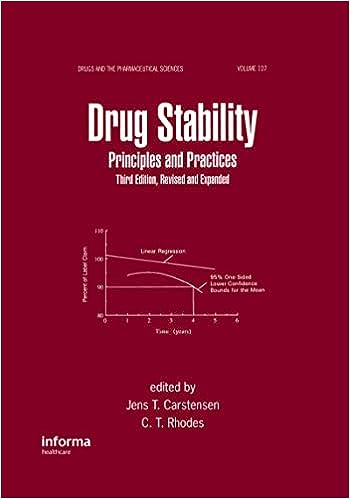Step-by-Step Guide to Preparing Regulatory Submissions for Stability Testing Programs
Introduction
Stability testing is an essential component of pharmaceutical development, providing evidence to support the safety, quality, and efficacy of drug products over their intended shelf life. Preparing regulatory submissions for stability testing programs requires careful planning, thorough documentation, and adherence to specific guidelines set by agencies such as the FDA, EMA, ASEAN, and WHO. This step-by-step guide outlines the process of compiling and submitting stability data, ensuring compliance and facilitating smooth regulatory approvals.
Step 1: Understand Regulatory Requirements
Familiarize yourself with the specific stability testing
- ICH Q1A(R2): Stability testing of new drug substances and products.
- ICH Q5C: Stability testing for biotechnological/biological products.
- ASEAN Stability Guidelines: Tailored to tropical climates for Zone IVb.
- WHO Guidelines: Simplified protocols for essential medicines in resource-limited settings.
Tip: Review the
latest updates to ensure compliance with current regulations.Step 2: Design a Robust Stability Program
A comprehensive stability testing program must cover the following study types:
- Long-Term Testing: Conducted under recommended storage conditions to establish shelf life.
- Accelerated Testing: Performed at elevated conditions to predict long-term stability.
- Stress Testing: Evaluates the product’s stability under extreme environmental conditions.
Tip: Include intermediate studies if significant changes are observed during accelerated testing.
Step 3: Generate Comprehensive Stability Data
Ensure that stability testing covers all critical quality attributes (CQAs) of the drug product, including:
- Chemical Stability: Assay, impurities, and degradation products.
- Physical Stability: Appearance, dissolution, and moisture content.
- Microbial Stability: Sterility and preservative efficacy.
Tip: Use validated analytical methods to ensure data accuracy and reproducibility.
Step 4: Document Stability Testing Protocols
Prepare detailed stability testing protocols for submission. Key components include:
- Testing conditions, such as temperature and humidity.
- Sampling intervals and the number of batches tested.
- Analytical methods used to monitor CQAs.
Tip: Use templates provided by regulatory agencies for consistency and clarity.
Step 5: Compile Stability Testing Reports
Organize the stability testing data into comprehensive reports for regulatory review. Include the following:
- Summary of Results: Highlight key findings, including any significant changes.
- Raw Data: Provide complete datasets to support conclusions.
- Graphs and Tables: Use visual representations to illustrate trends and findings.
Tip: Include justifications for proposed shelf life and storage conditions based on the data.
Step 6: Address Packaging and Labeling
Packaging plays a critical role in maintaining product stability. Include the following information in your submission:
- Container-Closure Systems: Details on the materials and their protective capabilities.
- Packaging Studies: Results of compatibility, extractables, and leachables testing.
- Labeling Information: Storage instructions and shelf life specifications.
Tip: Conduct stability testing with the final packaging configuration to validate its effectiveness.
Step 7: Ensure Data Integrity and Compliance
Regulatory agencies place a high emphasis on data integrity. Ensure compliance by:
- Maintaining detailed records of all testing procedures and results.
- Implementing electronic data management systems to track changes and ensure accuracy.
- Conducting internal audits to verify compliance with regulatory standards.
Tip: Use blockchain technology for an immutable audit trail of stability data.
Step 8: Engage with Regulatory Authorities
Maintain open communication with regulatory agencies to address questions and clarify requirements. Key actions include:
- Submitting a pre-submission briefing package to outline the stability program.
- Scheduling meetings with regulators to discuss specific concerns or challenges.
- Responding promptly to queries during the review process.
Tip: Collaborate with regulatory consultants to navigate complex submission requirements.
Step 9: Submit the Stability Testing Dossier
Prepare and submit the stability testing dossier as part of the overall regulatory application. Key sections include:
- Overview of the stability program.
- Detailed protocols and results.
- Proposed shelf life and storage conditions with supporting justifications.
Tip: Use the Common Technical Document (CTD) format to standardize submissions for multi-regional approvals.
Challenges in Preparing Regulatory Submissions
Submitting stability testing data can be complex due to:
- Regulatory Variability: Differences in guidelines across regions may require additional studies.
- Data Volume: Managing large datasets from multiple stability studies is resource-intensive.
- Stringent Requirements: Regulatory agencies demand thorough documentation and justifications.
Solution: Invest in advanced data management tools and engage regulatory experts to streamline the process.
Emerging Trends in Stability Testing Submissions
Advancements in technology and regulations are shaping the future of stability testing submissions:
- Digital Transformation: Cloud-based platforms enhance data integrity and facilitate real-time reporting.
- Global Harmonization: Efforts to align regional guidelines with ICH Q1A(R2) simplify multi-regional submissions.
- AI Integration: Predictive modeling tools provide supplementary data to support stability claims.
Future Outlook: Regulatory agencies may increasingly accept digital and AI-driven submissions.
Conclusion
Preparing regulatory submissions for stability testing programs requires a systematic approach, adherence to guidelines, and meticulous documentation. By following this step-by-step guide, leveraging advanced technologies, and maintaining open communication with regulatory authorities, pharmaceutical manufacturers can ensure compliance and facilitate smooth approvals. As the regulatory landscape evolves, staying informed about emerging trends and best practices will be essential for success in global markets.

